I'm still working on learning to bake with 100% whole spelt since I received a lovely Christmas present of a 2 kg bag of Anita's Organic Whole Spelt from the mill! So to also learn about about the use of a stiff sweet levain I thought I'd use one in this non enriched dough for the first time. As you may know having a significant amount of sugar in the starter creates osmotic pressure causing the microbes to dehydrate. This has a greater negative effect on the LAB than it does on the yeast. Combine this with a low hydration levain and you have a levain that will favour the yeast because of LAB will be at a disadvantage and this will then reduce the acids that are produced in the levain. That will then reduce the acid that is transferred to your dough. Also because the stiff sweet levain has favoured the yeast, the fermentation of your dough will go along quickly without the usual associated rate of pH decline. This was my thinking in planning this bake.
As you know spelt has poor quality gluten, this is because the balance of gliadin and glutenin show an excess of gliadin to glutenin. This results in a gluten that is excessively extensible and not very elastic. With this in mind, in theory a stiff sweet levain should prove to be useful in that less acid will be produced during fermentation. As you know proteases that break down gluten increase in their activity as the pH of the dough drops. Protease works well between 3.5-4.5 pH. At a pH of 4, there is maximum protease activity. This activity results in smaller protein chains and loose amino acids. Too much protease activity will destroy the gluten structure you might need right before the dough goes into the oven.
Overnight stiff sweet levain
16 g starter 25 g water 47 g whole spelt 16 g white sugar. Initial pH 5.2
Fermented at 76ºF. 10 hours later peaked about 3.5x rise and pH 4.86
Dough
453 g Whole stoneground spelt
23.55 g Vital Wheat Gluten
176 g water
10.47 g salt
Handful of spelt flakes to finish.
Using a #40 sieve, sift all of the whole spelt flour and VWG.
This resulted in 151 g of bran and course spelt flour, this was scaled with 302 g boiling water and after cooling placed in the fridge overnight,.
In the morning, add the salt and levain to the water breaking the levain down. Then add all the sifted flour. After resting 10 mins knead until it forms a firm dough. After a 10 mins rest, add the bran/spelt scald folding it in and then mix in a stand mixer until good gluten development.
Remove dough for aliquot jar and pH measurements. pH of dough was 5.44 before adding the scald and then 5.65 after the scald was fully incorporated. The dough was left to ferment at 82ºC.
After a 30 mins rest the dough was coil folded twice at 30 mins intervals and then left for the remainder of bulk. The dough had excellent structure and didn't need more folds.
When the dough reached a 40% rise by aliquot jar the pH had only fallen to 5.24. This is quite remarkable because typically when using pH to guide fermentation I would see a full 1.0 drop in pH to correlate with a 40% rise by aliquot jar. This is in keeping with the idea that the stiff sweet levain favoured the yeast and that had as yeast favouring effect in the dough as well. At this point the dough was given a final shape and after shaping was spritzed with water and rolled in spelt flakes.
The shaped dough, now in a banneton was allowed to complete a warm final proof at 82ºF while the oven was pre-heating to 500ºF until the aliquot jar showed a rise of 60% and a still high pH of 5.1. While the oven continued to heat the dough was placed in the freezer. After 30 mins the oven was ready and the dough removed from the oven. The pH at this point was 4.99. This is quite remarkable because typically I would see a full 1.3 drop in pH at the time of baking when just following pH and this had a total drop of only 0.67.
Bake with steam at 450ºF for 25 mins.
Vent the oven and remove the steaming equipment. Normally I would drop the temperature of the oven at this point, but I forgot and left it to bake at 450ºF by accident for another 22 mins. Typically it would bake at 425ºF for 25 mins or so.
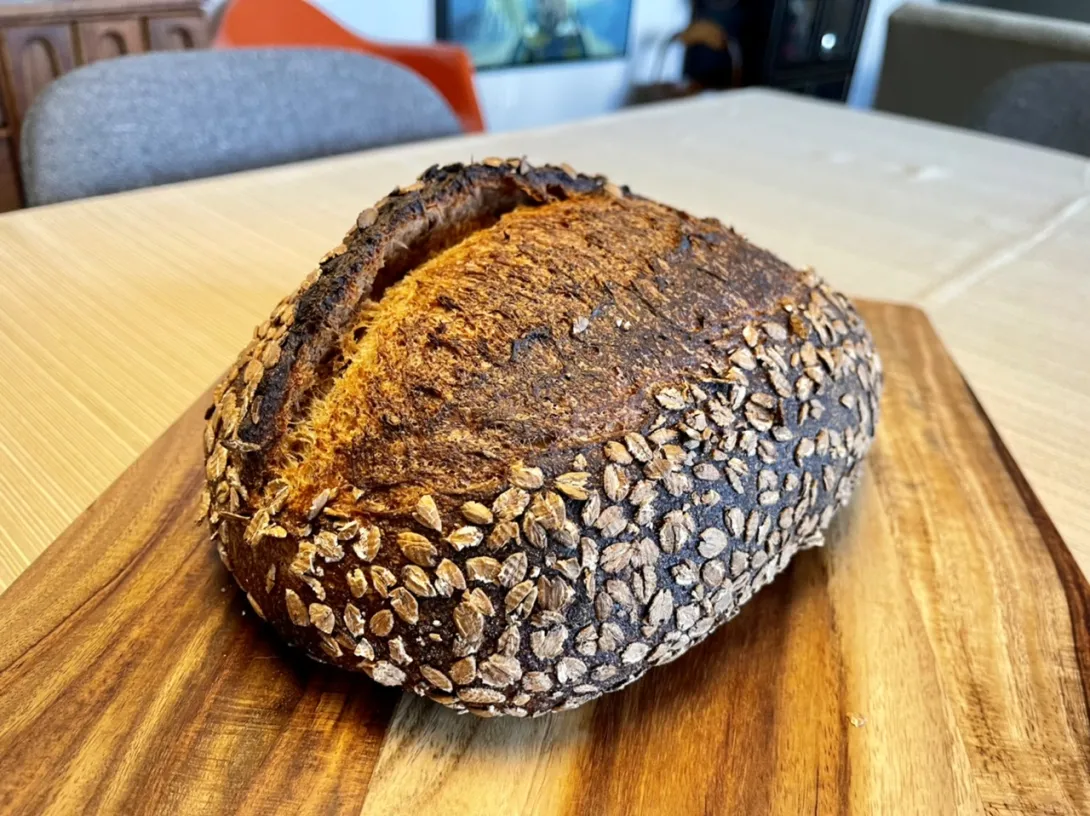
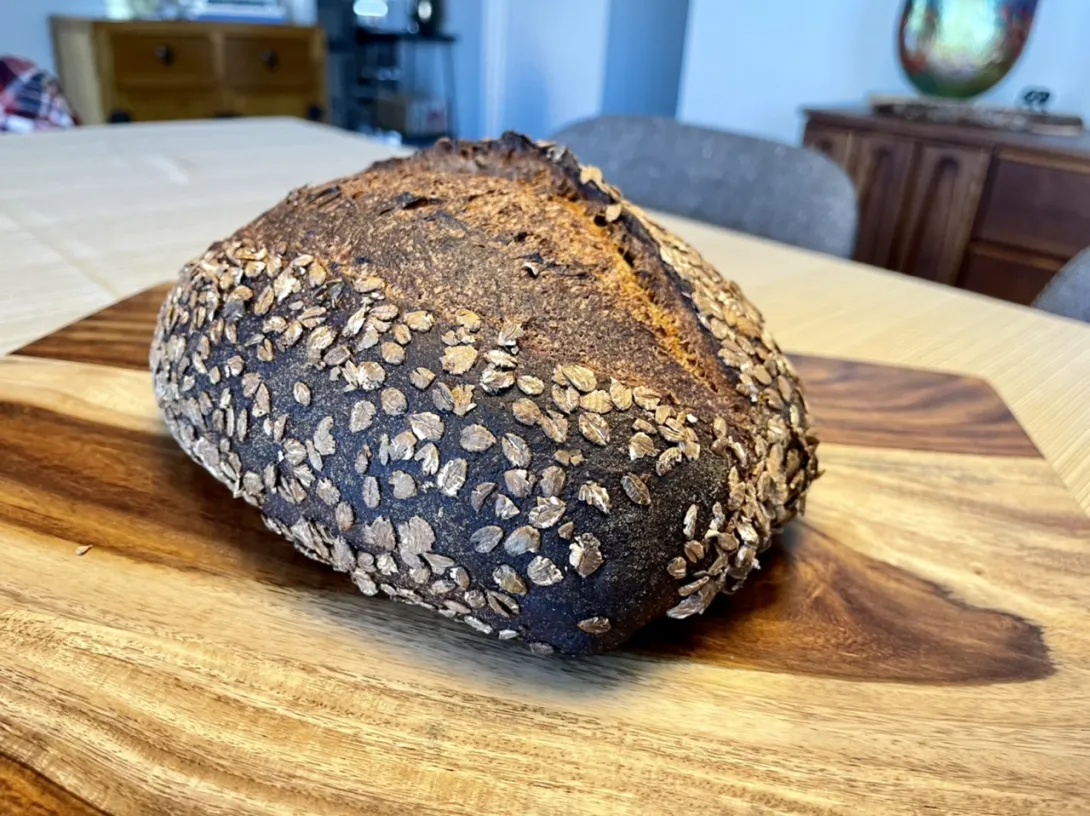
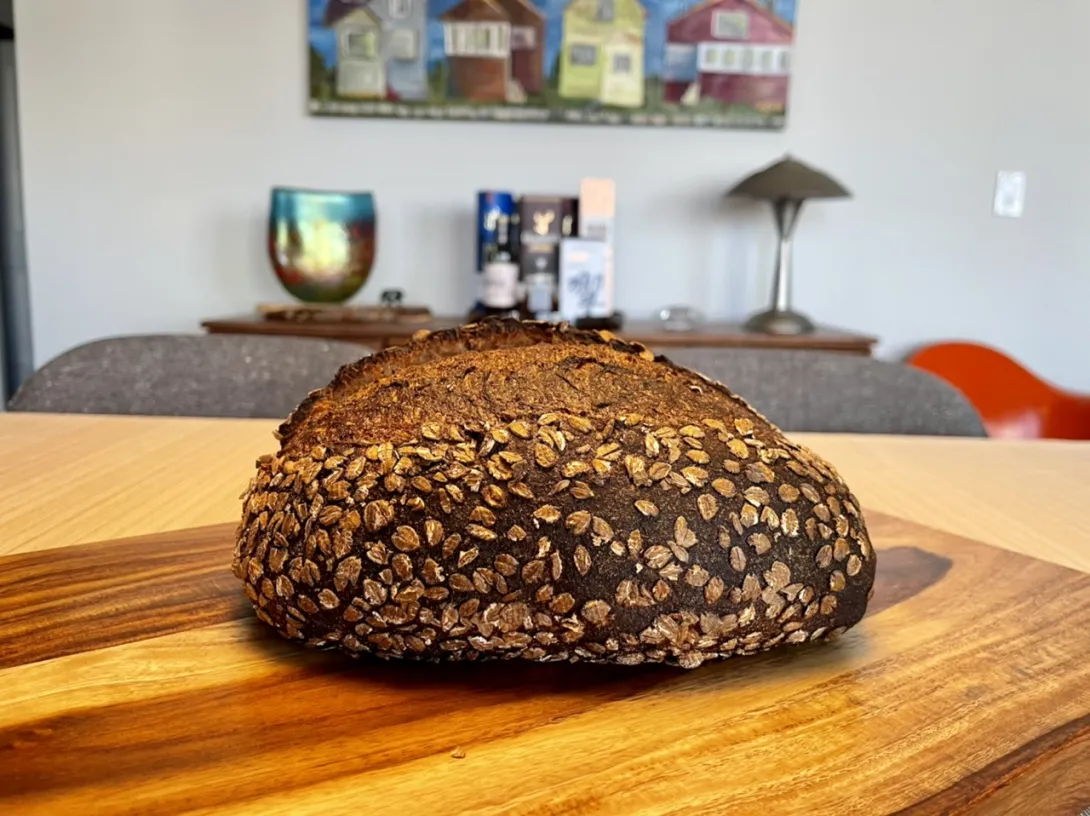
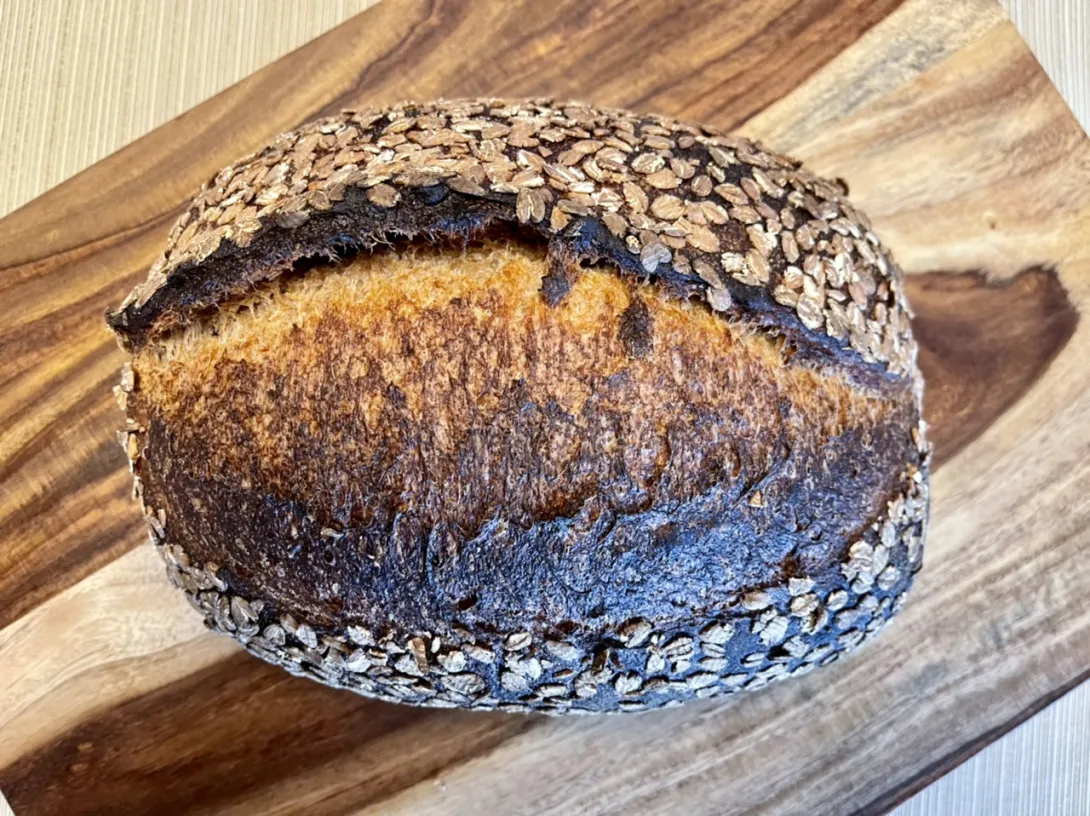
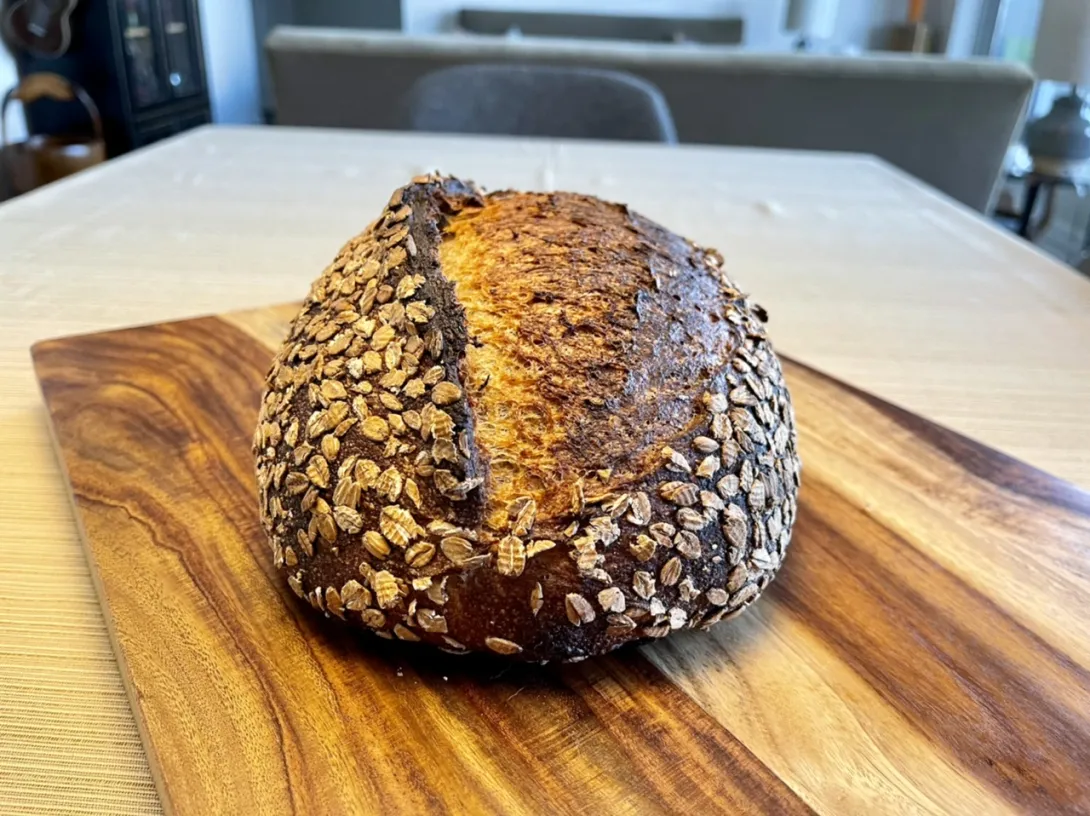
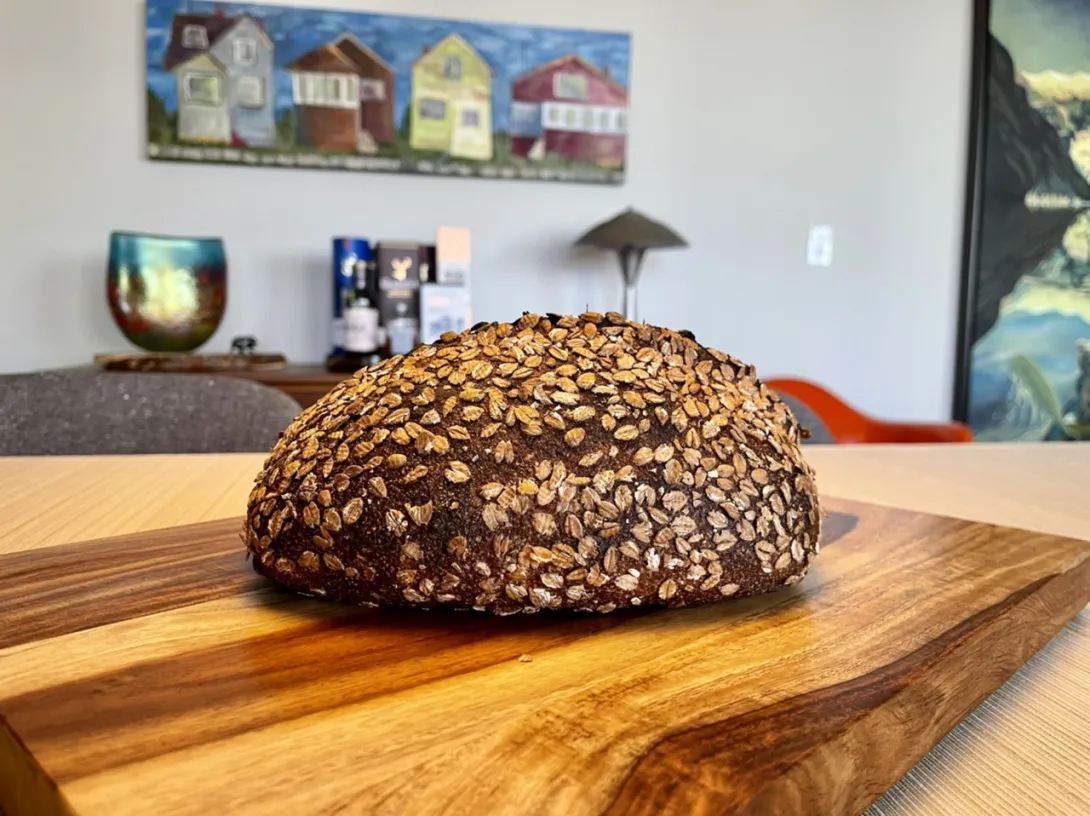
So what do you think? Did the theories prove to be true? The post bake oven spring and bloom would suggest it did, the crumb will be the final verdict.
- Benito's Blog
- Log in or register to post comments
For a second there I thought you got rise like that on pure spelt and was like "wow".
Yes I did add VWG to help with the poor gluten of spelt, you’re right.
That hydration, just wow. Even with the roux spelt is a difficult one. Well done Benny.
-Jon
Jon what I have found and what Dan brought to my attention on the KA site, is that the hydration from the scald doens’t seem to affect the dough handling. So even though the hydration seems to be a heady 96% it didn’t handle like that at all. I’d say it handled more like a 70% hydration dough. It was quite strong. Now I used a standmixer for this because the portion of the total dough that was the scald was quite high so I developed the gluten early on. But this dough despite being spelt didn’t really need many folds. I did two but really I could have gotten away with only one because it wasn’t spreading much in the bowl.
Benny
Can’t say I’m disappointed in the crumb. Nice and even which so far I have found happens when I have used scalds that had more than just bran. The higher hydration does impart a nice custard like consistency to the crumb without making it gummy.
I know some bakers might consider using VWG a cheat, but I do not. It is organic VWG and can be very helpful when baking with gluten poor flours like spelt. I will try to gradually reduce the amount of VWG in future bakes and perhaps by using the scald and the stiff sweet levain I might not need the VWG. But I don’t taste any negative from it in the amount I used and I got a bread that wasn’t a pancake like my previous bakes with spelt.
Nice bake Benny. I have been catching up on baking posts and you are turning out some excellent whole grain bread. I woke up my starter over the holidays and have been experimenting with a bag of spelt berries I have had lying around. I'm very interested in the pH experiments. Thanks for posting.
Good to see you David, I haven’t seen any of your amazing bakes in quite some time. I look forward to seeing your breads and experiments again. I’m sure some of my success with this particular loaf is the addition of VWG, but I also do believe the stiff sweet levain and the scald are contributing as well. Now that I have a proof of concept and know that this formula works, I can titrate the VWG down and see if there is a lower limit that still works or if I can do without.
Benny
I was wondering…when do you sleep? I get tired just reading all your investigations. The sweet levain theory is another interesting idea.
Phil
Ha ha Phil. I generally get a good night’s sleep. I have to say that I do enjoy a challenge when it works out LOL. I also enjoy trying to learn the science behind all this baking that we do.
Benny
.....can you post a bread that doesn't turn out beautifully?!?! ;)
Another lovely looking bake, Benny, and with a decidedly difficult grain to get such a result. I think that crumb is fantastic! If my loaves from today turn out anything like that, I'll be very pleased (off to a bad start when I only made half the levain I needed as I accidentally read the row for my single loaf amount......may take a while for the yeast to get through this batch! ;)
Thanks for sharing!
Rich
Thank you Rich, I’ve been lucky to have a string of good bakes, however, I’ve posted more than my fair share of questionable bakes too in the past. I can relate to reading the wrong line, not too long ago I wanted to bake two foacaccias and made the recipe I have saved. Well when they were doing final proof I was thinking that it was odd that they were so flat. At the end of proof they were taller but still quite flat. After baking they were more like flat breads than focaccia. I looked more carefully at my recipe and noticed I made the dough for 1 and not 2 focaccia! Duh.
Edited to add. At least with your levain you can just give it more time or I suppose you could add a tiny pinch of IDY if you aren’t a purist.
Benny
I know you've shared bakes previously that didn't go as planned, and I probably learned as much from those as I have from the ones you share that turn out so well. And, I'd add that I love seeing your beautiful bakes, as they provide a great visual standard (with all the details) on what great bakes look like! :)
I'm sure you knew there was some sarcasm in my comment, but wanted to be sure.....
I think my current batch will be fine, will just need some more bulk time to get where it needs to be. I'm just glad I figured out my goof before I mixed it all so I had a chance to adjust my hydration amounts, and expectations for timing! :)
I DO want to figure out if I can kick my starter into high gear enough to get the extra ~2" of rise you seem to get on these Hokkaido loaves! They really are beautiful, Benny (including the one you posted today!)
Thanks!
Rich
Yes I did realize you were kidding me Rich, it is so hard to convey humor sometimes on the net isn’t it? I’m looking forward to your bake.
I’m not sure why I’m getting that extra oven spring, perhaps it is related to shaping of the lobes and trying to get really good tension in them?
Benny
I usually use spelt as a porridge. your sweet levain is also something I would like to try. Science isn’t my strong point but I can follow the formula ! I used to have a bag of. VWG I need to look around for it. You do the most interesting baking . c
That is very sweet of you to say Caroline. I sometimes worry that I might be boring you folks as I repetitively bake similar breads with small adjustments trying to get a good bake. Glad you don’t mind.
Benny
Nailing the whole grain loaves Benny! Looks delicious.
Thank you very much Troy. Trying to do better than a year ago with some new tools (VWG and #40 sieve) and new methods (scald and stiff sweet levain). Now let’s see if I can rely on the VWG a bit less with the bake in the future.
Benny
Love the work looking at compensating for the gluten issue through a sweet levain. Looking forward to learning more about this as I have a bag of spelt grains and was pretty bummed with my flat loaves :p
Thank you David, I’m sure the three things really all contributed something to preventing a flat loaf. Flat loaves were the only thing I usually got when baking with a significant amount of spelt in the past. I had all but given up on spelt until Anita’s Mill sent me this 2 kg bag. So I had to figure out a way to bake a loaf that I could be proud of. Also, now I finally know what spelt really tastes like and it is great. I’m going to start using a stiff sweet levain more for my non enriched breads and see what that contributes. There really isn’t any sweetness from the sugar that I can detect in the final bread so there isn’t much to lose with that. The scald is something that I will also continue to use for 100% whole grains. The adjustment for future bakes will be the VWG, I do want to see if I can get away with much less or none in the future. But I suspect, it will be challenging for me to not use any.
Benny